



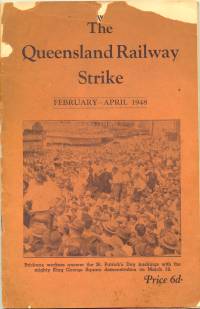 THE QUEENSLAND RAILWAY STRIKE
THE QUEENSLAND RAILWAY STRIKE
· FEBRUARY - APRIL 1948
· FOREWORD
· HANLON'S POLICY TO BLAME.
· REACTIONARIES COMBINE AGAINST STRIKERS
· RICH LESSONS
· QUEENSLAND - A LOW WAGE STATE
· HANLON ATTACKS WORKERS - AIDS RICH
· UNIONS ORGANISE AGAINST LOW-WAGE POLICY
· A.R.U. LEADERS DEFY ARBITRATION ACT
· HOW THE STRIKE BEGAN
· A.E.U. DECIDES ON ACTION
· UNIONS TRY TO SETTLE WITHOUT A STRIKE
· HANLON ATTEMPTS TO DIVIDE THE STRIKERS
· STRIKERS REFUSE TO BE COWED
· SERIOUS WEAKNESS ELIMINATED
· TURNING POINT
· HANLON'S STRIKE BREAKING REGULATIONS
· DISPUTES COMMITTEE UNCOMPROMISING
· CALL FOR ACTION TO REMOVE HANLON
· HANLON'S "MASTER PLAN"
· THE STRIKE EXTENDS
· DEMONSTRATION AT PARLIAMENT HOUSE
· GOVERNMENT AND POLICE TAKEN OFF GUARD
· HANLON BECOMES MORE DESPERATE
· HANLON'S FASCIST-LIKE LAW
· STRIKERS STAND FIRM
· POLICE ATTACK DEMONSTRATION
· TED ENGLART ARRESTED
· POLICE SAVAGERY ON ST. PATRICK'S DAY
· MURDEROUS ATTACK ON FRED PATERSON
· NATION-WIDE ECHOES
· WORKERS PREPARE TO ANSWER HANLON
· POLICE PROVOCATEURS FAIL TO SCARE WORKERS
· HANLON GETS HIS ANSWER
· POLICE WRONG AGAIN
· HUGE CROWD CONDEMNS HANLON'S POLICE BRUTALITY
· TORY PRESS LIES ABOUT DEMONSTRATION
· THE ROWE INCIDENT
· BALLOT PAPER DESTROYED
· ROWE SUMMONED FOR CONTEMPT
· ROWE "DISAPPEARS "
· DISPUTES COMMITTEE SEES HANLON
· HANLON YIELDS
· DISPUTES COMMITTEE RECOMMENDATION
· MASS MEETINGS ENDORSE TERMS
· TED ROWE REAPPEARS
· LEFT FOR SYDNEY OPENLY
· CONFIDENCE, APPRECIATION
· THE ATTEMPTED SELL OUT
· FURTHER COURT DELAY
· MAIN LESSONS OF THE STRIKE
· FIGHT AGAINST REPRESSIVE LAWS
The Queensland Railway Strike
[ Top of Page ]
February - April 1948
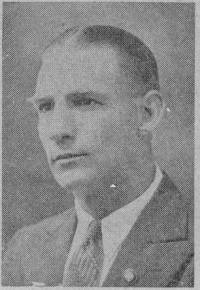
Doug Olive |
by Doug Olive
Queensland Assistant State Secretary of the Australian Communist Party, and author of this booklet.
DURING the strike, in an effort to distort the issues and bolster up its lying propaganda about Southern agitators" and "Communist plots," the Sunday Mail (22/2/48) said in a front-page article that Mr. Olive "arrived here nearly-a fortnight ago from his Communist Party haunts in Sydney," that he was the Party's "backroom" operator and that "few people have heard of Mr. Olive, who works unobtrusively..."
These are the Facts:
Mr. Olive has been in Queensland for the past 24 years. During that time, he was prominent in the struggles of the sugar workers in the North Queensland canefields. In 1939 he was expelled from the A.W.U. by the A.W.U. bureaucracy because of his activities in the campaign for a democratic ballot in the union. A year previously, he stood as endorsed Communist Party candidate for the Mundingburra seat in the State Parliament (now held by Mr. Tom Aikens). In 1941 (after the Communist Party had been outlawed by the Menzies' Government) he contested the same seat as an Independent Socialist. Since coming to Brisbane in 1942 to work as organiser for the Communist Party, he has become known to every Brisbane trade union official and thousands more rank and-file unionists throughout the State. He has spoken publicly as a Communist Party organiser at meetings in almost every town in Queensland, as far north as Cairns and west to Mt. Isa.
In these circumstances, the Sunday Mail tale not only caused great amusement throughout Queensland but also gave a-vivid illustration of the depths to which the Tory press would go in its efforts to discredit the workers' struggle.
FOREWORD
[ Top of Page ]
THE nine-weeks Queensland Rail Strike from February to April, 1948, ended in a splendid victory for the working class.
The gains won by railwaymen as a result of this strike amounted to approximately £1,000,000 wage increases per annum for 23,000 railway workers, plus £350,000 retrospective pay. Even the sectional rail unions, who ordered their members to scab, share the gains.
The rail victory was followed by wage increases for meatworkers, building trade workers, clerks, waterside workers, teachers and others. Indications are that even those policemen who used batons on defenceless workers will receive a rise in wages as a result of the strike they tried so hard to break.
The Tory press attempted to represent this great victory as a grave defeat for the strikers and professed sympathy for the railwaymen and other so-called dupes of "Communist intrigue." Only the Communist and trade union press, which had played an invaluable role throughout the strike, told the true story of the victory.
After the Court's judgment was given, the Queensland Central Executive of the Labor Party issued a special leaflet - distributed by scabs in some workshops - in which an attempt was made to "prove" that the strike was unnecessary and useless because, the leaflet said, the gains were no greater than those originally offered by the Government before the strike began.
Complete refutation of this false claim is contained in the following letter written by the Transport Minister (Mr. Duggan), and addressed to Mr. Merrill (District Organiser of the A.E.U.), on December 16th, 1947:
Dear Mr. Merrill,
With reference to the application made for increases in the marginal rates for tradesmen in the Engineering trades in the Railway Department and the discussions thereon which took place at a recent interview which representatives of unions whose members are employed in the Railway Department had with me, I quote hereunder for your information the text of the reply which I have forwarded to Mr. Irwin, Secretary of the Combined Railway Unions:
"I desire to inform you that Cabinet has decided that the Railway Department will not oppose the same rates of pay applying as granted to the Commonwealth Award. This decision is confined, however, to skilled tradesmen. (My emphasis. D.O.).
"Those employees in the semi-skilled trade groups would be advised to make application to the Court for a determination of their claims. This action is taken because of the difficulty in differentiating between the various sections of the Railway Department and the consequential anomalies which might be created by granting increases to labourers or semi-skilled men in Workshops while other employees carrying out comparable responsibilities in other sections of the Department are denied such marginal increases.
"The effect of Cabinet decision will be the tradesmen rates will be increased in the Railway Department by 6/10 per week. Such an increase will be the equivalent of the Mechanical Engineering Award rate for tradesmen of £7/17/6, less the value of conditions or privileges assessed by the Court at the rate of 1d. per hour.
"No objection will be raised by the Railway Department of the decision being applied retrospectively to the date of the application lodged by the Amalgamated Engineering Union, namely 18th September. In the event of the above mentioned terms being unacceptable to the unions concerned the offer outlined will be withdrawn and an approach will have to be made to the Court. Such a withdrawal however does not indicate that the Department will oppose the principle of marginal increases but in accordance with the offer the maximum rate which the Department will agree to will be 6/10 for skilled tradesmen." (My emphasis. D.O. ).
Yours faithfully, J. E. DUGGAN,
Minister for Transport.
Duggan's maximum offer therefore was 6/10 for tradesmen only. The next offer, made by Hanlon, was 12/4 for tradesmen only. The strike settlement, however, provided base rate fitters with 12/4 per week and base rate labourers with 10/1, while other classifications got proportionate increases, all retrospective.
The highest increase is £1/5/- for first-class engine drivers, who were not mentioned in previous offers, and 19/11 for tool makers.
Thus, despite the distortions of the right wing Labor politicians and the capitalist press, the strike settlement represented a great victory for the Queensland working class, a shattering defeat for Hanlon's low-wage policy.
HANLON'S POLICY TO BLAME.
[ Top of Page ]
THE strike began in the Railway Workshops and loco depots on the issue of marginal rates for classified skill and week-end. penalty rates. These issues had already been won in Southern States. The strike was an assault on the low-wage policy of the Hanlon Government and the capitalist class.
The strike developed into the biggest and most widely supported in Queensland history. It was waged over a front extending over 1000 miles north to Cairns and Mareeba, 600 miles west o f Townsville to Mt. Isa, and hundreds of miles south-west to Cunnamulla. It embraced hundreds of centres, large and small. To relate the story of the magnificent struggles of workers in all these centres would require a volume many times the size of this booklet.
The whole railway service was paralysed when the strike spread through a black ban on coal trains by the running men's unions - the A.R.U. and A.F.U.L.E. - supported by the coalminers.
Despite the efforts of A.F.U.L.E. State President Theo. Kissick and a very fine core of militant workers growing up in this organisation to keep their union on side, the A.F.U.L.E. left the struggle after five weeks. The main responsibility for the retreat of the A.F.U.L.E. rests with the Executive, the majority of which had no stomach for the struggle and failed to give a firm and inspiring lead to the members.
The miners, who had entered the struggle on March 4 on a solidarity basis through a black ban on coal trucks, decided at aggregate meetings to return to work on March 23, after the A.F.U.L.E. decided to lift its ban. During 19 days of solidarity action, the miners were subjected to consistent. pressure from certain Labor Party politicians, plus a sustained barrage of lying propaganda from the capitalist press. These reactionary elements distorted and confused the issues, divided the miners and undoubtedly influenced their decision to return to work.
However, the basic unions on strike remained solid throughout. With the support of the powerful waterside workers, seamen and rail unions in other States, who had entered the struggle on political issues - against anti-working class laws and in defence of the hard-won rights of trade unionism and democratic liberties - they battled right through to a magnificent victory.
REACTIONARIES COMBINE AGAINST STRIKERS
[ Top of Page ]
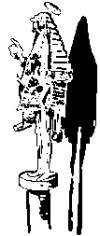
The Tory press blatantly misrepresented and falsified events and issues. Some Church leaders appealed to the workers - but not to the Government - for "reason."
The Arbitration Court cajoled and then threatened, the workers. The Government brought down the most savage and repressive anti-working class legislation. Some police used actual violence against the workers. Tory politicians, happily confident that the interests of the capitalist class were being well defended by Hanlon, remained mostly silent throughout the strike to save him from the embarrassing effect of their too open support.
Every reactionary scribbler, radio commentator and politician acclaimed Hanlon. His Police State methods were quoted by reactionaries as outstanding "statesmanship." He became the new-found hero and "strong man" of reaction.
Against this powerful combination of reactionary forces, the strikers and their leaders and fighting allies stood firm and united.
The firm, capable and decisive leadership given by the Central Disputes Committee won the confidence of the rank and file and inspired magnificent discipline, solidarity and heroism among them. Their unflinching stand won them solid support from all over Australia.
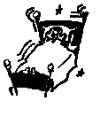
Confident in the justice of their claims and devoted to their leaders, backed by hundreds of thousands of workers throughout the Commonwealth, the railway workers and their fighting allies - the wharfies, seamen and rail workers in Queensland and other States - revealed a capacity for struggle which struck fear into the hearts of reaction, drove the would-be strikebreakers in to panic and tactical blunders and guaranteed the final victory.
RICH LESSONS
[ Top of Page ]
RICH lessons were learnt by the working class in the course of the strike. These lessons will be of great importance to the Australian working class.
Thousands of Queensland workers came face to face with the repressive role of the capitalist State. They learnt that, when solidly united around firm leadership, the working class can face up to and beat the boss despite his strength, his vicious propaganda and his allies within the labor movement.
They learnt to understand more clearly the anti-working class, strikebreaking role of the right wing Labor Party leaders, the Arbitration Court, some church leaders, the police, and the Tory press.
The protracted and bitter character of the strike indicates how big industrial struggles in future will develop as the economic crisis approaches and, the capitalist class strives, as always, to place the burdens of the crisis on the backs of the workers.
Workers throughout Australia will benefit from the lessons of the 1948 Queensland rail strike.
Queensland - A Low Wage State
[ Top of Page ]
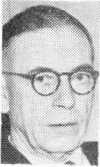
Premier Hanlon |
THE lessons of this great struggle will be best understood by a brief examination of the background against which it was fought out. This requires a brief review of some aspects of the policy of the Hanlon Government and certain events leading up to the strike.
Hanlon's economic policy is designed to keep Queensland wages low so that capitalists in this State may compete on more than favourable terms with capitalists in other States and also to induce overseas capitalists to invest in Queensland.
In almost every industry and calling, wage rates paid to Queensland workers have been far below those paid in other States.
A few examples of the position at the beginning of the rail strike will suffice to prove this:-
| N.S.W. | Vic | Qld | |
| | Per week | Per week | Per week |
| Sanitary Carters | £9 16 0 | | £6 16 0 |
| Carpenters | £9 16 0 | £9 10 0 | £8 1 8 |
| 1st Class Engine Drivers | £10 4 0 | £10 1 0 | £7 19 10 |
| Engine Fitter | £8 6 0 | £8 0 0 | £7 6 6 |
| Railway Porter | £6 10 0 | £6 8 6 | £5 16 10 |
| | | | |
| | Per Annum | | Per Annum |
| Classified male teacher (commences) | £359 0 0 | | £260 0 0 |
| Classified female teacher (commences) | £287 0 0 | | £220 0 0 |
A Fire Brigade Office 4th class received £5 per week less than in N.S.W.; a Fire Brigade Officer 3rd class received £128 per year less than in Victoria.
It is estimated that Queensland workers averaged £1/10/- per week less than those in N.S.W. and Victoria.
HANLON ATTACKS WORKERS - AIDS RICH
[ Top of Page ]
Low wages for workers, but rail concessions to wealthy squatters, Mt. Isa Mines, Colonial Sugar Refining Coy., and other rich concerns. The gift of millions of tons of Queensland coal at Blair Athol to overseas monopoly. Handing over of thousands of acres of rich lands to overseas food monopoly, while less than 100 returned soldiers of 3,000 odd applicants have been provided with land in nearly three years.
Such is the essence of Hanlon's economic policy.
UNIONS ORGANISE AGAINST LOW-WAGE POLICY
[ Top of Page ]
HANLON'S policy has been consistently exposed and condemned by Queensland Trades Union leaders of all political shades.
The Hanlonite rightwing knew that its low-wage policy would be strongly opposed by the organised working class.
In an effort to hold back militant trade union action for higher -wage standards, Hanlon rushed the strike-breaking Arbitration Act Amendments through the Queensland Parliament in December 1946. The Amendments, which aroused the opposition of the entire trade union movement, gave added power to interfere in the internal affairs of the Trade Unions.
A.R.U. LEADERS DEFY ARBITRATION ACT
[ Top of Page ]
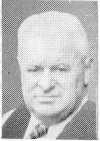
Mick O'Brien |
A.R.U. leaders Mick O'Brien and Frank Nolan led a 24-hour stoppage of work on 18th November, 1947, in defiance of this Act, and were cited before the Industrial Court for contempt and each fined £20.
The courageous and able manner in which O'Brien and Nolan stood up to and exposed the Court struck a severe blow at the Court's influence and prestige.
The 24-hour stoppage strengthened the Railway Unions and helped give the workers confidence in their ability to organise and carry through a united and successful strike. It strengthened the foundations of the unity which marked the course of this struggle and made victory possible.
How the Strike Began
[ Top of Page ]
IN April, 1947, Queensland Railwaymen's Unions lodged a claim in the Court for weekend penalty rates. This was followed by a claim in the Court for tradesmen in September, 1947, and a further claim for workshop employees on November 11th.
These claims were not heard by December 21st, 1947, when the Court adjourned for two months' vacation. Disgusted by this delay and spurred on by the rising resentment of the rank and file, the unions approached the Railway Department for an industrial agreement on their claims.
At the Conference which followed, Transport Minister Duggan repeated the offer contained in his letter to Merrill, i.e. 6/10 for tradesmen only retrospective to September 18. This offer was rejected at an All Service Union meeting and a decision adopted recommending strike action after January 31, 1948, if the claims were not settled by that date.
A.E.U. Decides on Action
[ Top of Page ]
THE A.E.U. held a secret ballot, resulting in a 10 to 1 vote in favour of strike action.
All other workshop unions, undoubtedly influenced by the A.E.U. decision, then voted - some by secret ballot and others by show of hands - for strike action.
On January 28th the Combined Railway Unions Committee decided to call out all rail workshop employees, tradesmen and their assistants in running sheds on strike from midnight February 2, 1948.
The 10 unions involved established a Central Disputes Committee based on Brisbane with representatives from the Ipswich Disputes Committee. The Unions involved were the A.E.U., A.R.U. Blacksmiths, Boilermakers, Ironworkers, Moulders, E.T.U., Carpenters, A.F.U.L.E. and Vehicle Builders.
UNIONS TRY TO SETTLE WITHOUT A STRIKE
[ Top of Page ]

ON Monday, February 2, a last-minute effort was made to settle the claims without a strike. After the failure of a compulsory conference on that date, the Central Disputes Committee sent a deputation to Transport Minister Duggan. He refused to increase the original offer of 6/10 to tradesmen only, or to extend retrospectivity beyond September 18.
The Disputes Committee met, rejected Duggan's offer, decided to proceed with the plan for strike action and called the workers out in workshops and loco depots.
Huge mass meetings were held in all rail centres on Friday, 6th February, where the men pledged their determination to stay on strike until victory was won.
The Central Disputes Committee held the leadership of the dispute and the confidence of local Disputes Committees and rank and file from the beginning to the end.
The majority of members of the Disputes Committees, including the Brisbane Central Committee, were either Labor Party members or supporters. Communists were in a minority on all Committees.
HANLON ATTEMPTS TO DIVIDE THE STRIKERS
[ Top of Page ]
LABOR and Tory politicians and newspapers attempted to represent the strike as a Communist-inspired plot to wreck the economy of the State.
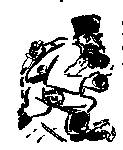
They adopted every conceivable method to destroy unity within the strikers' camp and also to isolate the strikers from the general public. Constant reference was made to "Southern agitators" and to non-existent Communist "domination" of the Disputes Committee. Food trains to coastal and Western towns were deliberately curtailed - not by the Disputes Committee, but by the Government - and electricity supplies were cut in country centres.
The Arbitration Act was supplemented during the strike by Emergency Regulations, the Industrial Law Amendment Act, and police violence in an attempt -to cow the strikers into submission and maintain the low-wage policy.
Hanlon and his followers knew that if the railway workers won their demands every other section of Queensland workers would be encouraged to demand and fight for similar wage increases. This cut right across their plans to further enrich the Queensland and overseas millionaires at the expense of the Queensland workers, and it accounts for Hanlon's stubborn opposition to the men's claims and the vicious methods used in attempts to break the strike.
STRIKERS REFUSE TO BE COWED
[ Top of Page ]
The effect of Hanlon's repression was to strengthen unity on -the Disputes Committees and among the rank and file.
The strikers and their leaders refused to be cowed by slave laws and acts of violence, nor could they be confused or stampeded by the Red Bogey; the issues before them were clear and simple.
No amount of distortion, side-tracking or downright lying could conceal the fact that the basic cause of the strike was Hanlon's low wage policy.
Queensland railway workers had served the same apprenticeship; possessed the same degree of skill; worked the same hours at equal intensity, but received 16/-, 13/- and 11/- less marginal rates for classified skill than their mates in N.S.W. and Victoria. They went on strike to end these anomalies and force the Government to include marginal increases and week-end penalty rates in the Queensland Railway Award.
SERIOUS WEAKNESS ELIMINATED
[ Top of Page ]
In the early period of the struggle some serious weaknesses were noted by the more experienced members of the Disputes Committee.
Some members, basing themselves on past railway strikes, sincerely believed and honestly propagated the dangerous illusion that the Government would cave in after a short, sharp struggle. They did not fully appreciate the seriousness of Hanlon's position - that the rail strike constituted a dangerous threat to the low-wage policy through which Hanlon was making available big profits to his capitalist masters.
Therefore, the "short sharp struggle" theory played right into his hands. It was a theory of defeat, not for the Government but for the strikers. In the initial stages it held up the organisation of food relief, propaganda, picketing and other forms of activity essential to the winning of a strike.
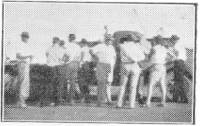
Pickets at Townsville |
This dangerous theory persisted even after it became apparent that the Government was organising emergency transport and taking all kinds of measures in preparation for a long drawn out struggle.
These views had to be fought and eliminated before the strike could be placed on a solid footing and members drawn into all essential forms of mass strike activity.
Those members of the Disputes Committee who had been associated with the leadership of the meat strike had learned that weak indecisive leadership, plus an inactive rank and file, weakened morale, strengthened the resistance of the Government, prolonged the strike and rendered victory difficult.
They explained to the Disputes Committee and rank and file that the duration and outcome of the strike would be determined largely by firm leadership, rank and file activity and disciplined adherence to central direction.
Turning Point
[ Top of Page ]
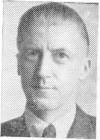
E.J. Rowe |
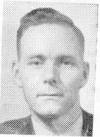
A. MacDonald |
At mass meetings he made stirring appeals to the strikers to picket their work places, to send speakers to other States and to establish local relief committees.
The clear, confident manner in which Rowe and others explained the issues and tasks to the workers had a profound effect on Disputes Committee members and strikers alike. This, together with the Disputes Committee's decision to appoint Ironworkers' State Secretary Alec Macdonald as full-time secretary marked the real turning point in the direction and leadership of the strike.
Pickets became active, strike delegates commenced to move out to other States, food relief committees were formed throughout Brisbane, Ipswich and other strike centres. This increased rank and file activity, lifted the morale of the strikers to a higher level, consolidated the strike and showed the Government that the men really meant business.
The effectiveness of mass picketing, propaganda, finance collections, and food relief was soon apparent. The workers held the initiative firmly, the strike was consolidating and victory appeared to be within grasp.
The Hanlon rightwing was in a desperate position. Something had to be done to starve the workers, to smash the picket-lines and defeat the strike. The Federal Government obliged Hanlon with a ruling that workers who belonged to any union with members on strike and who were locked out as a result were not entitled to Social Service benefits.
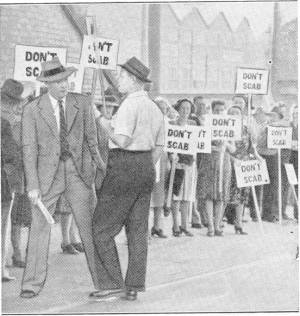
|
Hanlon's Strike breaking Regulations
[ Top of Page ]
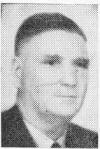
T. Aikens M.L.A. |
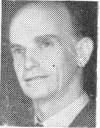
Fred Paterson M.L.A. |
This proclamation armed the Government and police with wide powers to attack picketing and to strike at the morale of the strikers.
The Emergency Regulations were clearly exposed in Parliament by Communist MLA Fred Paterson and Independent Labor MLA Tom Aikens. They proved that no State of Emergency existed and that the regulations had a strikebreaking purpose only.
The previous day the Arbitration Court had ordered all men back to work. Failure to obey the order, it was threatened, would mean loss of privileges.
DISPUTES COMMITTEE UNCOMPROMISING
[ Top of Page ]
THE Central Disputes Committee met on Saturday morning, 28th February, and replied with the following uncompromising resolution:-
"This Disputes Committee emphatically re-affirms its determination to carry on the present struggle until the just demands of the workers are won.
"The Premier, faced with the splendid unity of the workers displayed at the mass meetings yesterday, and driven to desperation on the eve of our victory, has resorted to measures that will bring the Labor Government eternal disgrace in the eyes of the Queensland workers.
"All members of the Parliamentary Labor Party, Labor Party Branches, and the Trade Unions, must exert pressure to avert this and force a change in the disastrous policy being pursued by Hanlon.
"The fascist-like emergency measures threaten the whole Trade Union Movement and must be fought. We therefore declare:
"That we reaffirm our previous decision to declare all locomotives and rail motors, except those required for emergency food and water trains in accordance with our previous decision, to be black. We call upon all railway arid tramway workers to scornfully reject the instructions to scab and to steadfastly refuse to accept any orders to return to work, other than those issued by the Disputes Committee.
"As the action now taken constitutes a threat to the whole Trade Union Movement, we believe this reactionary move must be answered now by solidarity actions from the rest of the workers - beginning with Watersiders, Seamen and interstate Railwaymen.
"We therefore appeal to those unions to join us now in what has become a common struggle. We believe, too, that the unions already involved should now use whatever additional forces they may have at their disposal.
"Our cause is just, our unity unshaken. Victory will be ours."
CALL FOR ACTION TO REMOVE HANLON
[ Top of Page ]
On Sunday night, February 29, at a special meeting of the Queensland Trades-and Labor Council, a record attendance condemned Hanlon's Emergency Regulations, endorsed the resolution of the Disputes Committee and called for action to save the Labor Government by forcing Hanlon's resignation as Premier. The following resolution was carried unanimously:-
"That this extraordinary meeting of the Trades and Labor Council of Queensland, called as a result of the use of fascist-like strikebreaking emergency measures by Premier Hanlon, declares that the policy and leadership of Premier Hanlon has turned Queens land into a low- wage State and is responsible for the present strike. We further declare Premier Hanlon's fascist-like emergency measures have a strikebreaking purpose only. His given reasons for their introduction are entirely false because the Disputes Committee hers already manned and was prepared to continue to man emergency food and water trains.
"This desperate anti-working class action of Premier Hanlon far exceeds that of ex-Premier McCormack in 1927 and unless successfully challenged will wreck the Labor Government in control of this State. We declare that, in order to save the Labor Government from being wrecked, Premier Hanlon must be forced to resign and the emergency measures withdrawn.
"We therefore call upon the Trade Unions, both Federal and State, members of the Parliamentary Labor Party, the Queensland Central Executive, all Labor Party branches and all decent honest people who believe in the great cause of the Labor Movement to exert the utmost pressure to enforce the immediate removal of Hanlon as Parliamentary leader of the Labor Party and thus save the Queensland Labor Government from disgrace and defeat."
HANLON'S "MASTER PLAN"
[ Top of Page ]
An iron curtain was placed on the decisions of the Disputes Committee and the Trades and Labor Council. The capitalist press and radio played up the "back-to-work" order, emphasised police powers to prevent picketing and tried to create the impression that the strike was over.
Reaction's plan was obvious; the withdrawal of Social Service payments, the back-to-work order, the Emergency regulations, threats of lost privileges, and the iron curtain on the Disputes Committee's call to continue the strike all fitted into the one reactionary strike- breaking pattern.
Hanlon thought his "master plan" would panic the workers. who, spread over thousands of miles, were cut off from contact with the Disputes Committees over the week-end. He felt that extra police powers against pickets would result in workplaces being left unguarded.
His plan failed - only a few workers showed up to work and an increased picket line was more than sufficient to turn them back.
The Disputes Committee countered by calling all workers to mass meetings throughout the State at 10 a.m. on March 1.
Hanlon's strike breaking plan failed because in one month of struggle a firm, sincere and decisive leadership had developed loyalty, devotion and discipline from the rank and file that could not be shaken.
Instead of following Hanlon's instructions, the workers flocked to strike meetings throughout the State to pledge their determination to fight on to victory.
They answered Hanlon's attempt to smash the picket line by further large-scale enrolments for picket activities.
The Strike Extends
[ Top of Page ]
HANLON'S anti-working class, strike-breaking measures steeled the determination of the railwaymen to fight on, raised the struggle to a high political level and won great new allies for the railway workers.

The waterside workers, who have become famed for their political awareness and their willingness to fight against all forms of repression and attacks on democratic liberties, decided in all Queensland ports to enter the battle against the Emergency | regulations.
The Seamen's Union threw in its weight and declared a ban on all shipping to Queensland. The Railway workers in N.S.W., Victoria and South Australia responded with a ban on goods to Queensland.
The miners also entered the solidarity struggle through a black ban on coal trucks.
Just as it was Hanlon's low-wage policy, and not the Communists, that forced strike action on to the railway workers so, too was it Hanlon's repressive legislation and not Communist propaganda and "intrigue" that brought the watersiders and seamen into a political struggle in defence of trade unionism and democratic liberties.
DEMONSTRATION AT PARLIAMENT HOUSE
[ Top of Page ]
ON March 5th, over 3,000 railway workers and waterside workers marched to and demonstrated outside Parliament House. On that day the Labor Caucus was meeting inside the House for the first time since the strike began more than a month before. The Disputes Committee aimed to give Caucus members an opportunity to hear the men's case.
It was believed that by now Parliamentary members of the Labor Party would see that Hanlon's leadership and policy would bring discredit and disgrace on the Government.
A number of Labor Party politicians, influenced by pressure from Labor Party branches and Trade Unions within their electorate, were said to be opposed to Hanlon's policy on the strike.
However, they were too weak or spineless to buck the rightwing machine, declare themselves on side with the workers and demand that the strike leaders be heard. The deputation from the Strike Committee was admitted to Parliament House, but not allowed to address the Caucus meeting.
GOVERNMENT AND POLICE TAKEN OFF GUARD
[ Top of Page ]
THE demonstration taught the workers that the strike would be won not through assistance from the politicians but by their own organisation, unity and staying power.
The manner in which the demonstration was organised and carried through taught the workers that central planning by the Disputes Committee and discipline in carrying out central decisions enabled them to catch the Government and police unawares.
The decision to hold the demonstration was announced simultaneously at mass meetings of railwaymen and waterside workers which were held in different halls.
No sooner was it announced than the strikers commenced to pour out of their respective meeting places to march to Parliament House.
Government and police stooges had not time to acquaint the authorities. The Government and police were taken completely off their guard and the strikers were outside Parliament House before hurriedly-summoned squads of plain-clothes and uniformed police arrived on the scene.
HANLON BECOMES MORE DESPERATE
[ Top of Page ]
THE mighty demonstration outside Parliament House, plus the blockade by land and sea which completely sealed off the State and dealt further great blows to the bosses' profits, threw Hanlon into a greater panic and caused him to make more serious political blunders.
On Saturday, March 6; a British tanker broke the seamen's blockade, berthed and emptied its load at the Shell Oil Depot at Newstead.
The Central Disputes Committee declared the Shell Co. black and A.E.U. members, Ironworkers, Storemen & Packers, Carpenters and Painters, withdrew their labour. A strong picket was thrown around the Shell Depot.
This attack on the "sacred rights" of private monopoly revolted the capitalist soul of "Socialist" Premier Hanlon.
HANLON'S FASCIST-LIKE LAW
[ Top of Page ]
DISCARDING all working class and democratic pretensions, Hanlon on Tuesday, March 9, introduced his infamous Industrial Law Amendment Act - a coercive measure which increased the legal power of the State to intervene more openly and sharply on the side of monopoly capitalism against the democratic struggles of the people.
Under this fascist-like Act, any sergeant of police or officer holding higher rank was given power to enter, by force if necessary, a trade union meeting, a meetings of the Disputes Committee or mass meeting of strikers and order any persons to leave the meeting if, in the opinion of the officer, an attempt was being made to persuade any person to leave his employment or to refrain from returning to work.
Under the Act, Queensland became a Police State. Police officers were empowered to order any person to remain in his home or any particular room.
The Act was framed in such a way as to make it almost impossible for a person charged under its provisions to gain a favourable verdict.
The Act provided for savage sentences if, in the opinion of a police officer, workers were at a certain place for the purpose of persuading other men not to work.
NO EVIDENCE OR PROOF WAS REQUIRED, MERELY THE OPINION OF THE POLICE OFFICER.
The onus of proof was placed on the defendant. He must prove that the police officer was not of the opinion he was there for the purpose of preventing men from working.
This law went much further than strikebreaking. It attacked the fundamental principles of British law and endangered the freedom and liberty of every citizen.
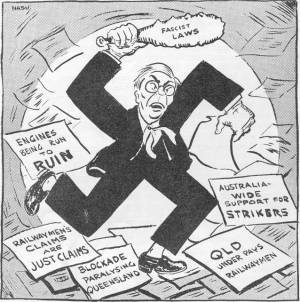
|
STRIKERS STAND FIRM
[ Top of Page ]
THE introduction of this savage fascist-like legislation failed to shake the leadership or panic the rank and file.
The experience gained during the six weeks of struggle, in which the Government and newspapers had pulled every trick to undermine morale and break the strike, had taught the workers that Hanlon would go to any length to defend the bosses' profits and maintain his low wage policy.
These valuable lessons helped to strengthen and steel the workers. They realised that victory now was essential not only to win their economic demands but to preserve the rights of trade unionism and democratic liberty.
Accordingly, their response on the picket line on March 15 was better than ever. On that day they demonstrated outside the Shell Co. bearing placards "Down with the Slave Act," "Heil Hanlon," "Remember Eureka," "Smash Fascism Now," and other telling slogans.
POLICE ATTACK DEMONSTRATION
[ Top of Page ]
THEY then grouped and marched in a political demonstration from the Shell Co. to the Trades Hall. At the Valley comer the police attacked the demonstrators, tearing placards from their hands and using violence against them.
The pickets, experienced now and no longer afraid of the police held their ranks and continued the march to the Trades Hall, where a worker uncovered a concealed slogan and waved it defiantly at the police.
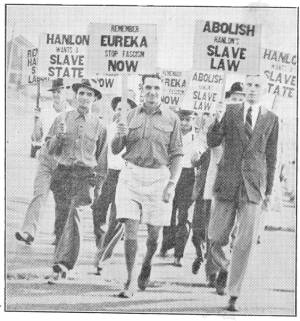
|
Ted Englart Arrested
[ Top of Page ]
THE following day, Ted Englart, Secretary of the Brisbane Branch of the Waterside Workers' Federation, was arrested on the picket line at Newstead.
Throughout the dispute Ted Englart, Mick Healy, Fred Paterson, Max Julius and other working class leaders gave inspiring leadership and advice on the picket lines and in mass demonstrations.
Police Savagery on St. Patrick's Day
[ Top of Page ]
On St. Patrick's Day, March 17, a peaceful procession of strikers, headed by Mr. M. Healy (Secretary of the Queensland Trades and Labor Council) and others, bearing the Australian flag and the flag of Eureka, a coffin inscribed "Trade Unionism" and many anti-slave law slogans inscribed on shamrock-shaped placards, left the Trades Hall to march to the morgue. At the intersection of Ann and Edward Streets, only 200 yards from the Trades Hall, they were set upon by 300 police who tore into the defenceless demonstrators, punching, kicking and batoning with fascist-like savagery.
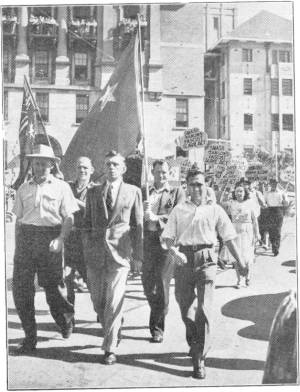
|
MURDEROUS ATTACK ON FRED PATERSON
[ Top of Page ]
FRED PATERSON, Communist M.L.A. - who was not taking part in the demonstration but who, with Communist barrister Max Julius, was there as legal adviser - was brutally struck down from behind by a detective with a baton. The blow was delivered with murderous savagery. Paterson was taken to hospital suffering from concussion and severe shock.
Jack Grayson (A.R.U. member) was also smashed to the ground by a detective's baton. Gerry Tippett (waterside worker) was felled to the ground, where a plain-clothes policeman stamped the heel of a boot on his nose, which was fractured in four places.
Women demonstrators were called "sluts" and "dirty bitches" by the police and punched and knocked to the ground. Mick Healy, Max Julius, Bob Myles (A.E.U.), R. Boyd (Waterside Workers' Federation), and Gerry Tippett (Waterside Workers' Federation) were arrested.
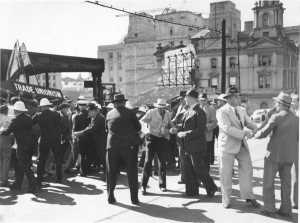
Cops attacking union demonstration outside Brisbane Central Station on St Patrick's Day, March 17 1948. |
NATION-WIDE ECHOES
[ Top of Page ]
The vicious blows that struck Paterson, Grayson, Tippett and others down echoed throughout the nation.
Fred Paterson, who had defended the cause of the workers so ably and courageously on the floor of Parliament House and on the picket line, and whose brilliant brain was to defend strike leaders in Court that very day had been temporarily silenced.
Telegrams expressing sympathy for the victims of the brutal assault and condemning Hanlon's vicious police measures were sent to the Strike Committee by mass meetings of workers, students and intellectuals from one end of Australia to the other.
Angry workers and other democrats all over the country demanded that Hanlon resign from politics. Spontaneous stoppages were heed in mines and factories throughout Australia.
News of the bashings sent a wave of revulsion throughout the nation, built support for the courageous Queensland workers, and further strengthened their determination to battle on to victory.
No action was taken by the Government and police to bring those responsible for the assault to justice. Instead, Hanlon made a statement in Parliament accusing the demonstrators of having fought among themselves.
Pictures taken by newspaper photographers (despite police efforts to prevent them) and published in the Australian Press told a very different story. They left no doubt as to who used the batons on defenceless workers or of the criminal purpose behind the assault.
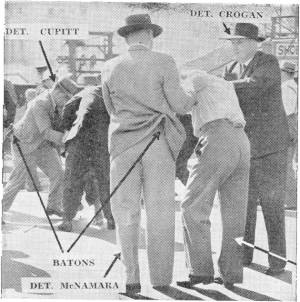
This photograph answers the Hanlonite propaganda that the demonstrators "fought amoung themselves". The police batons are obvious. |
Workers Prepare To Answer Hanlon
[ Top of Page ]
THE Executive of the Qld. Trades and Labor Council met on March 18 and decided to call on workers to leave their jobs on Friday, March 19, and answer Hanlon's police violence and pro-fascist legislation by a monster protest demonstration in King George Square. The decision was upheld by the Trades and Labor Council delegates, who met the same night.
Fascist laws and police thuggery were to be answered by working class solidarity.
The police refused to issue a permit for the demonstration.
But this did not deter the unions. Plans for the demonstration were finalised.
The waterside workers were to meet at the Ritz Dance Hall in Adelaide Street, near Petrie Bight, on the morning of March 19. The rail workers were to meet at the Trades Hall at the same time.
The waterside workers planned to break up their meeting at 11.30 a.m., form up outside the Ritz and, led by Jim Healy, Ted Englart and, other Executive officers, march through Queen Street to King George Square.
The rail workers, meeting in the Trades Hall, were to wait until the wharfies had swung through Queen Street, past Edward Street, then they too were to march from the Trades Hall and converge on the square from three points.
Workers from other jobs, meatworkers, building tradesmen, A.W.U. members and metal workers were directed to assemble in the Square at noon.
POLICE PROVOCATEURS FAIL TO SCARE WORKERS
[ Top of Page ]
ON the morning of the demonstration the atmosphere was tense. Police and Government stooges had been busy overnight and in the morning spreading stories about counter-measures proposed by the Government.
According to these provocateurs, mounted police were to be used to charge and trample over the demonstrators.
Hundreds of special constables armed with bicycle chains were to smash into the marchers and, as a final measure, machine guns were to be mounted in King George Square.
The aim of these rumour-mongers was to scare the leadership, panic the rank and file and prevent the demonstration.
But Hanlon missed again. The leaders refused to be scared and the rank and file, as always, stood solidly behind them.
Hanlon Gets His Answer
[ Top of Page ]
SHORTLY after 11.30 a runner stationed near the wharfies' meeting, brought the news to the Trades Hall: "The wharfies are on the march!"
Eager eyes strained down Edward Street from the Trades Hall for the first glimpse of the wharfies moving over Queen Street intersection, which was to be the signal for the rail workers to move off.
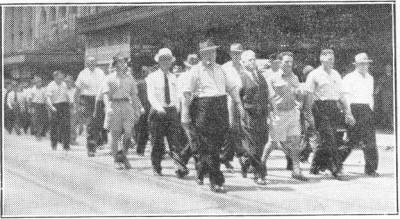
Defying police warnings, Brisbane watersiders - led by Federal Secretary Jim Healy, Brisbane secretary Ted Englart, assistant secretary Alby Graham and other officials - marched in solid ranks through Brisbane's main streets to the King George Square demonstration. |
Suddenly a great shout rang from the Trades Hall - "There go the wharfies!"
The workers, who only two days before had seen the skulls and faces of their mates being smashed by police batons and boots were answering Hanlon and his Police State methods.
It was an exultant inspiration for the railway workers to see the wharfies, 500 strong, swing through against the Edward Street traffic lights. Promptly, the railwaymen began to file out of the Trades Hall, ignoring the squads of police stationed outside and marching steadfastly to join their allies in the square.
POLICE WRONG AGAIN
[ Top of Page ]
THE police expected the wharfies to swing into the Square from the Albert Street end. They were wrong again. The wharfies marched on past Albert Street to George Street, swung down George Street into Adelaide Street and approached the Square from the south. The rail workers, marching in from the north end of Adelaide Street and others west from Roma Street, all entered the square at about the same time as the wharfies marched in from the southern side.
Within a few minutes the square was packed tight with the surging mass of workers.
The crowd, estimated at upwards of 20,000, stretched from Ann Street back to Queen Street, up each side of Adelaide Street, and along Ann, Roma and Albert Streets.
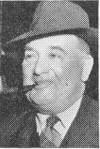
J. Healey |
Working class organisation, initiative and courage had smashed through Hanlon's ban and defied his police State methods.
Hanlon's baton-swinging "heroes" were conspicuously absent from the square.
Huge Crowd Condemns Hanlon's Police Brutality
[ Top of Page ]
Having demonstrated their solidarity and defiance of Hanlon's ban and Police State methods, the workers marched back to the Hall.
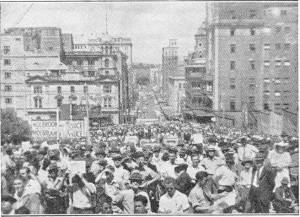
From King George Square, thousands moved to the Trades Hall and packed the surrounding streets as they were addressed through amplifiers by strike leaders. |
Approximately 10,000 people heard speeches given by J. Healy (Waterside Workers' Federation), E. J. Rowe (A.E.U.), G. M. Dawson (T. & L.C.), F. J. Nolan (A.R.U.), and Tom Aikens, M.L.A.
Mr. C. Jones, State President of the A.C.P., delivered a personal message from Mr F. W. Paterson. The meeting was chaired by M Healy (Secretary of the Trades and Labor Council).
Resolutions condemning Hanlon's Slave Act, police brutality and the attempted murder of Paterson and demanding Hanlon's resignation, were carried unanimously by the assembled crowd. A large section of the audience held up slogans - "Down with the Slave Act," "Heil Hanlon," "Remember Eureka," "Stop Fascism Now," in defiance of the big squad of police.
TORY PRESS LIES ABOUT DEMONSTRATION
[ Top of Page ]
THE Tory press lied its head off in an effort to play down the demonstration.
It claimed that only a few thousand attended the demonstration in the Square and at the Trades Hall. Only the Queensland Guardian (Communist weekly) and Trade Union journals told the truth.
But no quantity of Tory press lies could conceal the truth from the 20,000 Brisbane citizens who witnessed the mightiest demonstration in Queensland history.
This great show of working class strength and courage, together with the sorry state of Queensland Railways, affected considerably the future course of the strike, weakened the Government and made it possible to clinch the victory which was to follow shortly.
The Rowe Incident
[ Top of Page ]
RIGHT through the strike, efforts were made by the Government, Arbitration Court, Press and stooges to force a secret ballot on the unions.
On March 18, an A.E.U. member from Shell named Eustace asked the Industrial Court to conduct a ballot of A.E.U. members at the Shell Depot. The Court willingly obliged.
Reaction's plan was to break through with a Court-conducted ballot in one section of the A.E.U. and then proceed to undermine the major union in the strike section by section.
BALLOT PAPER DESTROYED
[ Top of Page ]
ON March 22, the day the Shell ballot was to be counted, 22 A.E.U. members met in the Trades Hall. They pointed out that each ballot paper was numbered and bore the initials of the Industrial Registrar. Thus the secrecy of the ballot was being violated and members were open to victimisation.
The 22 members present decided to hand over their ballot papers to Commonwealth Councillor E. J. Rowe, who took them to the mass meeting of railway strikers, where they were destroyed.
Rowe explained to the meeting that, in contrast with the Court's present attitude, on a previous occasion when members of the union at Mars Machine Tools factory had taken a majority secret vote for strike, the Registrar had rejected it, claiming that a sectional vote was not valid, and tract demanded a vote of all members in the industry. The Court could not have it both ways, Rowe said .
ROWE SUMMONED FOR CONTEMPT
[ Top of Page ]
THE Court moved rapidly and summoned Rowe to appear on March 25 for contempt of Court.
Reaction, which had planned to split the A.E.U. from the other unions and thus weaken and break the strike, hated Rowe. His firm leadership had frustrated this plan.
Reaction reckoned that, with Rowe safely tucked away in Boggo Road jail, detached from his members, the plan to isolate the A.E.U. would succeed.
Rowe was tried and found guilty in his absence and a savage sentence was meted out. He was fined £60, with £30 costs, and sentenced to jail until he had "purged his contempt.
ROWE "DISAPPEARS "
[ Top of Page ]
THAT afternoon a warrant was issued for his arrest and the manhunt was on. The Brisbane daily newspapers screamed that every policeman in Queensland was issued with instructions to arrest Rowe on sight.
Police attempts in three States to find the missing trade union leader provided workers and the general public with much amusement.
The police raided workers' homes, even looking in ice-chests and bread baskets for him.
In a leaflet, "Spurn Lying Propaganda," the Disputes Committee exposed Hanlon's efforts to break the strike and gave clear reasons to the workers why Rowe had "gone into smoke."
Disputes Committee Sees Hanlon
[ Top of Page ]
ON March 30, an Executive meeting of the A.E.U., attended by delegates from all strike centres, commenced with J. Cranwell (A.E.U. Commonwealth Council's chairman) in attendance.
This meeting was adjourned until April 1.
A mass meeting of railwaymen at Rockhampton asked the Disputes Committee to notify Mr. Hanlon that they were prepared to negotiate on 12/4 for tradesmen, with proportionate increases for semi-skilled and unskilled workers and week-end penalty rates
The Disputes Committee agreed and a conference was arranged with Hanlon on April 1.
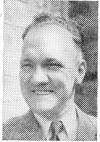
J. McPhillips |
After reviewing the general strike position, the meeting discussed correspondence from Transport Minister Duggan and the M.L.A. for Maryborough (Mr. Farrell), and also a report arising from a discussion between Hanlon, J. Cranwell and J. Healy. As both the correspondence and the report indicated that the Government was prepared to discuss terms of settlement on the basis of increases considerably higher than the original offers, the meeting decided that Hanlon be interviewed.
Hanlon Yields
[ Top of Page ]
ON the same evening eight members of the Disputes Committee met in conference with the Premier who, after considerable discussion, proposed the following formula as a basis of a settlement:
· As 12/4 is to the Fitters' present rate, so increases for other skilled and semi-skilled men should be to their present rate.
· The Government would admit the justice of week-end penalty
· There would be no victimisation.
This formula was interpreted by the Disputes Committee to mean a minimum increase of 10/1 for the lowest paid worker, with agreement by the Government to pay beyond 12/4 to some other classes of tradesmen.
DISPUTES COMMITTEE RECOMMENDATION
[ Top of Page ]
IN view of the very big improvement of this Government offer over its previous offers, the Disputes Committee unanimously decided to make the following recommendation to all Disputes Committees and mass meetings:
"That, in view of the fact that the solidarity of the railway workers, tramway workers and Shell Oil Coy. workers has at last forced the recognition by the Government of claims not previously recognised and in view of the fact that the offers now made by the Government include, as well as 12/4 base increase, the recognition of the same ratio or proportionate increases to other skilled and semi-skilled grades based on the daily or weekly rate as are now existing, which increases are above those previously offered, and in view of the fact that retrospective payment of such increases will be made back to September 18 for all workshops employees, and the fact that the Government for the first time recognises the justice of payment of penalty rates for week-end work, and m view of the fact that the Premier anticipates a basic wage increase, none of which propositions would have been achieved without a strike, we now believe that we should forthwith secure these gams as well as lodge a claim, as agreed upon previously by the unions dispute, for similar wage increases for the purely railway grades, and accept the agreement of the Premier to discuss such claim.
"Further that, in view of the fact that the repeal of the Industrial Law Amendment Act will be considered at a later date, we decide that, in order to carry out these objectives and at the same time maintain the organised strength and union solidarity now existing, we recommend to all mass meetings that work be resumed at a date to be arranged between the Disputes Committee and the employers and those matters upon which agreement has not been reached be fought for by all available means.
"We call upon all railway workers to maintain the splendid fighting capacity they have revealed in this strike and to use this strength in all of the struggles which he ahead.
Mass Meetings Endorse Terms
[ Top of Page ]
MASS meetings in all centres on April 2 (except in Townsville, where the meeting was held on the Sunday) endorsed the terms of settlement and the Disputes Committee's resolution.
Speakers explained to the meeting that for the first time Hanlon had made a clear offer to the Disputes Committee.
All previous offers - 6/10 in the early period and 12/4 later - applied only to tradesmen. General increases ranging from 10/1 upwards to £1/5/- plus time and a half for Saturday were the new important concessions promised only after weeks of determined strike action.
Thus the daily press and other adherents of the low-wage policy deliberately lied when they claimed that the final terms of settlement were similar to the Government's earlier offers. The obvious intent of this lying claim was to save face and, above all, to create the illusion that the gains finally achieved could have been won without strike action.
Ted Rowe Reappears
[ Top of Page ]
THE dramatic appearance of Ted Rowe at the Brisbane mass meeting caused a sensation.
For eight days, despite the greatest manhunt in Australia's history, Rowe had frustrated all efforts of the police to catch him and had continued to carry out this strike activities.
He drove to the Trades Hall on April 2 in a car and entered despite a strong police cordon. Pickets slammed the door in the faces of police who, too late, made a dash to intercept him.
Rowe's firm leadership during the strike had won the esteem of the workers and they showed it in no uncertain manner. Wave after wave of applause greeted his appearance on the platform from which he made a statement showing why he had "gone into smoke"
"When I received the Court summons at 5.30 p.m. on March 24 to appear at 10 a.m. on Thursday, March 25, it was obvious that the Court had thrown customary procedure overboard. It had already been decided that a discussion with the Ipswich District Committee of my union had become necessary, and I had made arrangements to go to Ipswich on the Thursday. I had booked out by air on the Friday with the object of having discussions with my Commonwealth Council in Sydney over Easter on the Queensland position, planning to return here on Tuesday night.
"Added to this was the fact that I was in Queensland as a Federal Officer of my Union, applying Federal decisions. One of these decisions was that the union could not recognise a ballot such as the one conducted among our Shell Company members where people not so entitled were given ballot papers, the ballot papers were marked, secrecy was violated, and people were laid open to economic intimidation.
"The whole question of Federal Union rights has yet to be legally tested and my attendance at Court would have implied acceptance of something the unions intend to fight.
"So I went up to Ipswich on the Thursday morning and had discussion with the District Committee, talked with large numbers of workers in the Trades Hall and returned to Brisbane.
LEFT FOR SYDNEY OPENLY
[ Top of Page ]
"LATER I left for Sydney, quite openly, and while there I was able, in conformation with the circumstances prevailing, to report Queensland developments to Commonwealth Council," Rowes statement continued.
"The Council has been able to make alternative arrangements for Federal assistance and leadership to our Queensland members.
"I then returned to Queensland, again quite openly, and addressed the strike meeting as I have done on every occasion since my arrival in Queensland.
"I am now submitting to arrest voluntarily because I think the original intention behind my arrest has failed. I could carry on the present evasion but, as I feel it would no longer serve a useful purpose, I intend to save the authorities unnecessary endeavour by facilitating my own arrest.
"I think the results of such arrest will be interesting and quite useful in the general trade union struggles that must develop against the obviously prepared legislative aims to shackle the big Federal Unions and thus hold back the struggle of their members for decent living standards."
Rowe appealed to the workers to endorse the recommendation of the Disputes Committee and return to work under the Committee's direction. He emphasised the need for united disciplinary return to work in order to guarantee the Premier's resumption terms would be honoured.
CONFIDENCE, APPRECIATION
[ Top of Page ]
RESOLUTIONS expressing confidence in the Central Disputes Committee and appreciation of the support given by Federal Unions and unionists who contributed over £30,000 towards strike relief, of the great support given by the Queensland Trades and Labor Council, and of the excellent work of the Women's Auxiliary, who fed the pickets, were all carried with great enthusiasm, and 1,600 workers rose and sang "For They are Jolly Good Fellows."
At Ipswich Jack McPhillips, Assistant Secretary of the Ironworkers' Federation, made a stirring appeal to strikers to maintain their organisation to prevent a double cross.
At every centre the Disputes Committee recommendation to accept the Government's offer was carried with great enthusiasm.
Never in the history of Queensland had a strike ended with such high unity and spirit. The workers had won a great victory and were determined to hold the Government to the full terms of settlement.
The Attempted Sell out
[ Top of Page ]
ON April 13 the Disputes Committee met Railways Commissioner Maloney to discuss Hanlon's formula and some anomalies.
Mr. Maloney then told the unions they had "misinterpreted" the Premier's formula, although the Railways Industrial Officer had agreed with the union's figure on the previous day.
Mr. Maloney presented an entirely new basis of wage increases.
It was a 4/2 increase on all wages under £6/2/- per week (which included all labourers), to 12/4 maximum for employees earning £7/8/6 per week and over.
The Disputes Committee representatives promptly rejected this offer. They described it as a betrayal of the agreement, and walked out of the conference.
The Disputes Committee met at 8 a.m. next morning and, reinforced by the knowledge that Ipswich and other Workshops were prepared for immediate action to prevent a double-cross, decided to approach Hanlon.
At this interview Hanlon agreed with the union interpretation of his formula, that is, 10/1 per week rise for labourers and proportionate increases for tradesmen.
Maloney's attempted sell-out on the original terms of settlement indicated the determination of the Government, whom he represented, to rob railway workers of the full fruits of victory and, together with Duggan's letter to Merrill, refutes rightwing and Tory contentions that the final gains could have been won without a
Further Court Delay
[ Top of Page ]
ON May 31, seven weeks after the return to work, a Central Disputes Committee meeting was held in the Brisbane Trades Hall. The purpose of this meeting was to discuss the Court's delay in finalising judgment on the men's claim and decide a course of action necessary to force the hand of the Court.
At this meeting the following resolution was carried unanimously: -
"That we approach the President or members of the Court by deputation for information as to the principles adopted in the decision of the Court, and W9 further take up with the Minister concerned a request for advice as to when the judgment will be printed and further, we meet the Minister for Transport to endeavour to have him agree that payment for increases, including retrospective pay, will be made prior to June 30.
"Should the result of the interview be unsatisfactory to the Central Disputes Committee, which shall consider these results immediately, we convene lunch-hour mass meetings of workshops employees throughout the State and place the information at our disposal before members and (1) that a recommendation that a four hour stoppage be called in all centres if a favourable judgment is not delivered within 7 days of the mass meeting be placed before those engaged in Workshops proper and running sheds; (2) that a recommendation that a complete overtime ban be placed on all running sheds until such favourable decision is delivered, be placed before running sheds (Workshops) employees; (3) that a recommendation that such stop work meetings to decide what other action may be necessary to obtain a favourable decision on our claims be placed before both meetings."
It was agreed to hold the mass protest meeting in all centres at mid-day Friday, June 4. On that day, at 11 a.m., one hour before the mass meetings were to be held, the Court judgment granting the unions' claim was given.
Thus the same firm leadership and rank and file solidarity which had frustrated every effort to smash the strike prevented the attempted sell-out by Maloney (as the Government's agent), and also drove the Court into action and clinched the ultimate victory.
Main Lessons Of The Strike
[ Top of Page ]
ABOVE all else, the strike was a victory for firm and decisive leadership on the Disputes Committee, on the picket line, in mass demonstrations, before the Arbitration Court, and in Conference with Government representatives. Firmness of leadership inspired confidence, courage and disciplined loyalty from the rank and file.
· The workers learned the value of the mass and squad picket. They learned the need to quickly organise effective publicity apparatus, leaflets and speakers to combat press lies and place the truth before the people and collect finance to guarantee strike pay. They learned too the need to organise citizens' relief committees to alleviate distress amongst strikers' families in the various localities.
· They learned the power of the mass political demonstration as an effective means of protest against repression and violence.
· They learned that the Labor Governments will use measures no less repressive and violent than Tory Governments to smash strikes and defend the bosses' profits.
· They learned the power of the big Federal Unions and the real value of centralised militant leadership.
· They learned the role of the Queensland Trades and Labor Council as the main central directing organisation for trade union policy, unity and activity.
The Queensland Railway workers came out of the strike no longer afraid of each other. Confidence was restored and the inability of the strike-breaking little unions to carry through their traditional scabby mission was exposed alongside the demonstration of the great power of the main legitimate railway unions, especially the Workshops and running section unions.
No longer are these small strike-breaking unions the menace they were - no longer are they an effective strike-breaking force.
A new Central Railwaymen's organisation based on eleven Federal Unions with members in the Railway Service and excluding the sectional or yellow unions has been formed as a result of the experiences gained during the strike. This represents a big step forward and should result in much stronger organisation and further victories for Queensland railway workers.
The work of Fred Paterson and Tom Aikens in opposition to repressive legislation on the floor of Parliament House, plus their valiant assistance to pickets and general defence of the workers' rights, was an effective contrast with the open strikebreaking attitude adopted by the right wing labor elements and the spineless attitude of other Labor politicians.
The workers saw in Paterson and Aikens a new type of workers' politician and this lesson will not be lost in polling booths in future elections.
The workers learned that secret ballots do not make strikes legal. They learned that all strikes which hit at bosses' profits or repressive Government laws are illegal in the eyes of the boss, the Government and the Arbitration Court.
The Queensland workers have won a great victory. They have learned many valuable lessons from this strike which will assist the whole Australian labor movement towards better and more effective organisation - greater fighting unity and more important victories in the days that lie ahead.
Fight Against Repressive Laws
[ Top of Page ]
DURING and after the railway strike, savage fines and jail sentences were imposed on strikers and leading trade union officials, 14 of whom were charged under Hanlon's Industrial Law Amendment Act.
Victims of the strikebreaking, anti-working class campaign under the Industrial Law Amendment Act are as follows: -
| No of charges | Total Penalty | |
| Mick Healy, Secretary, Qld. Trades & Labor Council | 4 | £277 17 6 |
| Ted Englart, Brisbane Secretary Waterside Workers Federation | 5 | £250 5 3 |
| J. Tippett, watersider and victim of police brutality on St. Patrick's Day | 5 | £218 0 9 |
| C. Graham, watersider | 5 | £174 0 9 |
| M.N. Julius, barrister | 2 | £107 11 0 |
| Joe Esler, watersider | 2 | £ 72 4 9 |
| | Total: | £1,100 0 0 |
In default of payment of these fines, the Court has ordered gaol terms which run into years.
Charges not heard at time of writing:
| | No. of charges | |
| A. P. Nicol | Organiser Building Workers Industrial Union | 2 |
| C. F. Ashby | member Vehicle Builders' Union | 1 |
| D. J. McCarthy | watersider | 1 |
| B. Bennett | executive member Waterside Workers' Federation | 4 |
| D. Hanson | member Vehicle Builders' Union | 4 |
| D. C. Booth | watersider | 2 |
| J. Grayson | member ARU - St; Patrick's Day victim | 2 |
| P. Godfrey | member Storemen and Packers' Union | 2 |
In addition fines totalling nearly £200 have been imposed on strikers and their leaders under the Traffic Act. These men, whose leadership and courage on the picket line assisted to hold morale and win the strike have earned the hatred of the capitalist class and their lackeys, but they have also earned the respect and support of all trade unionists and other decent liberty loving people.
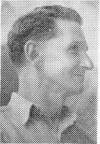
E.C. Englart |
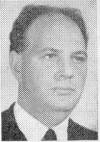
M. Julius |
This represents a major victory for the progressive people of Australia. But the trade union movement and other progressive bodies are determined to carry on the struggle until all anti-working class legislation is repealed - the fines refunded - and the gaol sentences imposed on Trade Unionists under Hanlon's Act are quashed.
Continuation of the rail strike unity of workers, allied with all other progressive people, can force victory in the campaign for these demands and-for an extension of the democratic rights and liberties of the Australian people.